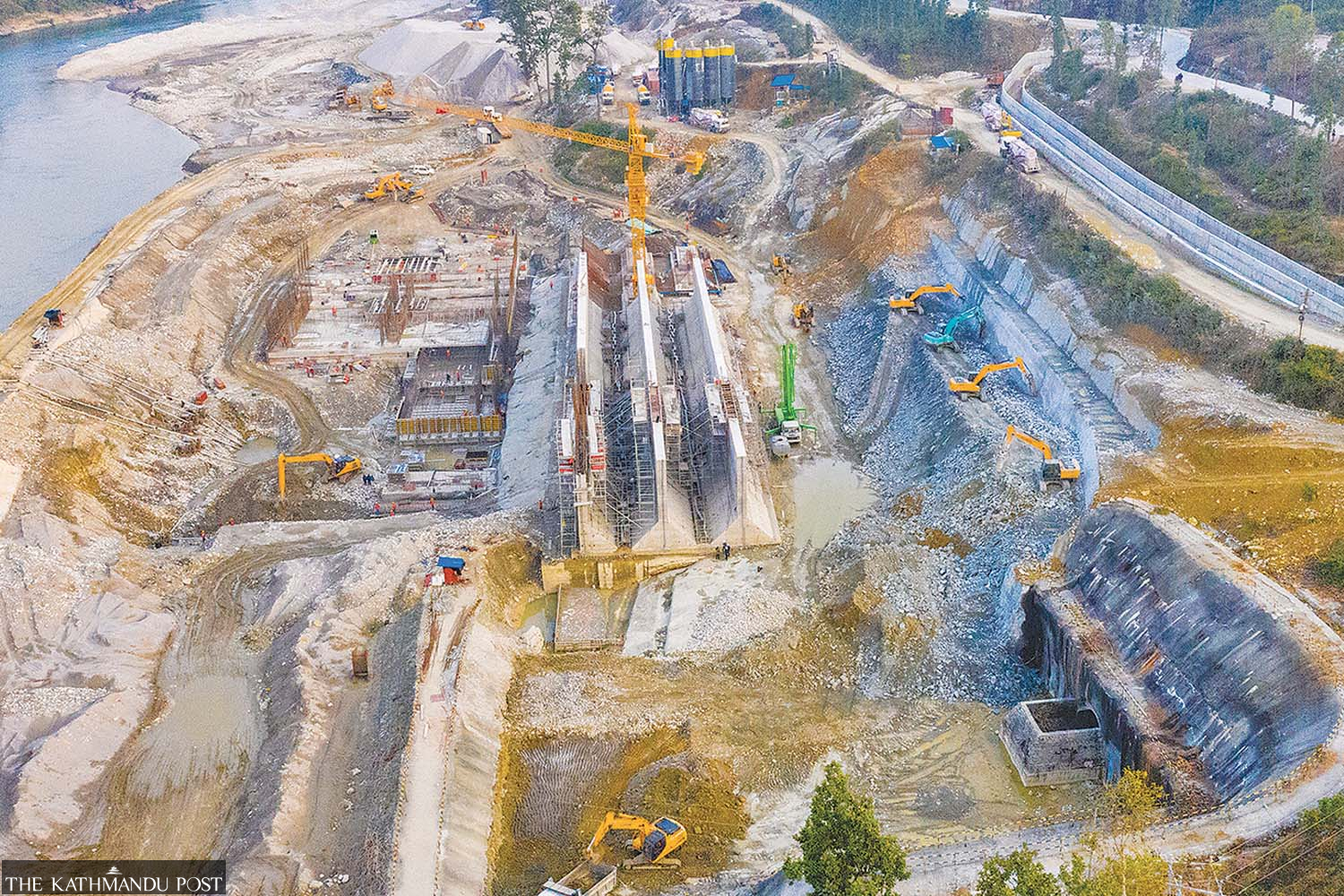Money
Nepal’s growth to crawl to 4.4 percent amid slow trade, poor investment
IMF flags concerns about large boom-bust credit cycles in Nepal’s financial sector. That means excessive credit growth amid erosion in borrowers’ repayment capacity.
Sangam Prasain
Nepal’s economy is entering a pronounced slowdown due to the impact of the months-long import ban and the government's low capital spending.
In this year’s annual budget, the government had announced an eight percent economic growth. But after six months, the mid-term review slashed the rate to 4.5 percent.
“The growth outlook still remains subject to an unusually high uncertainty,” said Hem Raj Regmi, deputy director general at the Central Bureau of Statistics, the country’s national statistical agency.
“Based on the current normal situation, we have estimated the economy to grow by 4.5 percent this fiscal year.” Last fiscal year, Nepal recorded 5.8 percent growth.
The International Monetary Fund (IMF) has also downgraded Nepal’s growth rate from its initial estimate. The IMF said the economy is expected to expand by 4.4 percent this fiscal year—from mid-July 2022 through mid-July 2023.
It had previously estimated a five percent annual growth.
“Nepal’s real GDP growth is supported by the ongoing recovery of tourism, strong agriculture sector performance in the first half of the year and resilient remittances,” according to the IMF statement issued on Tuesday.
“Nepal remains vulnerable to shocks, from volatile and higher global commodity prices and from natural disasters and weather variability,” the IMF said.
According to Regmi, the economy grew at 0.8 percent in the first quarter of the current fiscal year, the lowest year-on-year growth in the past seven years. “It was due to slowed trade, construction and mining sectors.”
Mining and quarrying and the construction sector suffered the most, posting negative growths of 29.2 percent and 24 percent respectively.
“The main reason behind the slump in the construction sector is the lack of cash flow," said Rabi Singh, president of the Federation of Contractors' Associations of Nepal. “Development works have been moving at a snail's pace. The government still does not have enough funds.”
According to Singh, the contractors have yet to get payments totalling around Rs70 billion from the government.
“The prices of all construction materials, except cement, have gone up,” he said, adding that the construction sector faced a double whammy: the government fund mobilisation in development projects remained dismal, and banks, from where contractors borrow, are facing a liquidity crisis.
The IMF, which has the mandate to oversee the global financial system, said the slowdown in imports dampened tax collections in the first half of the current fiscal year, and this necessitates expenditure rationalisation in the mid-year budget review to maintain fiscal discipline and debt sustainability.
The temporary import restrictions, primarily aimed at reducing the rapid post-pandemic growth of imports, were removed in December.
“But it has had a lasting impact on the economy,” said Regmi.
Automobile dealers say market confidence has not returned even after the lifting of restrictions.

The IMF has suggested Nepal adopt a cautious monetary policy to bring the still elevated inflation down towards the Nepal Rastra Bank’s seven percent target and to allow the economy to grow without placing undue pressure on international reserves.
The year-on-year consumer price inflation remained at 7.26 percent in mid-January 2023 as compared to 5.65 percent a year ago.
High inflation and slow economic growth cause problems for investors. Such a situation prevents consumers from spending. The overall demand for goods slumped by 28.28 percent during the first quarter of the current fiscal year, the Confederation of Nepalese Industries said in its December 2022 report.
The IMF said that the much-needed monetary policy tightening last year, together with the gradual unwinding of Covid support measures, helped moderate credit growth and contributed to the moderation of inflation stemming from the global commodity price shock caused by the Ukraine war.
As a result, and in the context of resilient remittances, external pressures eased, and international reserves stabilised in the first half of 2022-23.
The IMF, however, has flagged concerns about large boom-bust credit cycles in Nepal’s financial sector. This means credit may have grown to excessive levels and borrowers' repayment capacity eroded due to higher lending rates.
“Bank asset quality has deteriorated, reflecting a decline in the repayment capacity of borrowers due to higher lending rates and rising leverage, a concern that is moderated by banks’ capital-adequacy ratios that are above the regulatory minima,” according to the IMF.
The IMF said Nepal’s monetary policy should focus on maintaining a cautious and data-driven stance supported by macroprudential measures. “This will help avoid large boom-bust credit cycles, which can create financial sector instability and are not supportive of sustainable growth.”
It said that Nepal Rastra Bank, the central bank, needs to ensure appropriate reclassification of loans and close monitoring of the impact of a potential deterioration in the repayment capacity of borrowers.
The IMF has suggested that reducing the cost of doing business and barriers to foreign direct investment would support growth, especially in sectors such as high-value agricultural products, information technology, energy, and tourism.
The IMF team led by Jarkko Turunen visited Kathmandu on February 15-28.
They held discussions with a range of stakeholders in the context of the 2023 Article IV consultation and the combined first and second reviews of the authorities’ economic programme supported by the IMF’s Extended Credit Facility (ECF).
The Nepali authorities and IMF staff reached a staff-level agreement on the policies and reforms needed to complete the combined first and second reviews under the ECF.
The agreement is subject to approval by the IMF Executive Board. The approval would make available about $52.2 million, bringing total disbursements under the ECF thus far to about $156.6 million, from a total of about $375.8 million that Nepal is supposed to get.




 7.12°C Kathmandu
7.12°C Kathmandu














